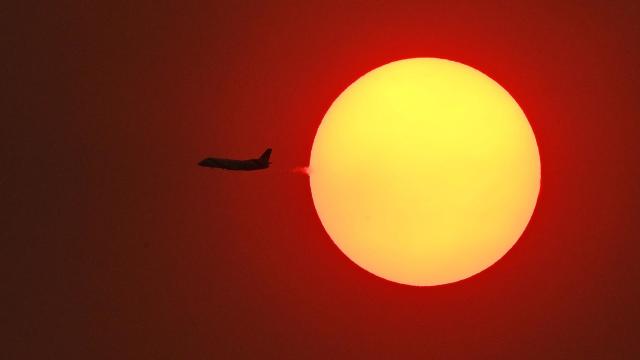Carbon dioxide. We should stop emitting it.
Scientists say it. The United Nations says it. Greta Thunberg says it. Even big finance corporations say it (even if they’re actively impeding doing it).
And yet here we are on the brink of a year that will see one of the biggest jumps in atmospheric carbon dioxide on record. The jump is largely fuelled by human activities like burning fossil fuels, but the Australian bushfires will play an outsize role in the rise.
This year already to be expected as long as humans keep pumping carbon pollution into the atmosphere.
[referenced url=” thumb=” title=” excerpt=”]
The horrific Australian bushfires will also give atmospheric carbon dioxide a boost. The flames, which have been fanned by hot, dry weather associated with climate change, have charred more than 26 million acres of forest and unleashed copious amounts of carbon dioxide in the process. If the fires were a country, their emissions would slot in somewhere between Japan and Germany as the world’s sixth-biggest emitter. That makes the fires responsible for up to 2 per cent of the rise the Met Office is forecasting. It’s both horrifying that the fires can make a measurable impact on the entire atmosphere and depressing that they’re responsible a relatively small part of the rise. In other words, human activities are really doing the atmosphere dirty.
The year-over-year rise for 2020 is expected to be 2.74 ppm, which would make this one of the biggest increases in recorded history. In this case, records extend back to 1958 at Mauna Loa. Over that period, humans have been putting carbon in the atmosphere at a quickening pace. That’s led atmospheric concentrations of the gas to rise faster, but there’s some year-to-year variability due to natural processes that can suck carbon out of air or result in more of it ending up there.
One of the biggest drivers is El Niño, a periodic warming of the waters in the eastern tropical Pacific. That can set off a host of impacts, including drying out tropical forests in Indonesia and Brazil and heating up the planet as a whole. That weakens natural systems that can suck up carbon dioxide, meaning more of it stays in the atmosphere. This year will likely have “El Niño-like conditions,” driving the big jump in atmospheric carbon dioxide concentrations. The biggest leap ever recorded was 2016 when a Super El Niño roasted the globe.
The Met Office began releasing a formal carbon dioxide forecast in 2017 in part as an academic endeavour to understand how carbon sinks and sources are functioning, but it’s also a nice way to really engage your inner dread. Thanks, Met Office.
